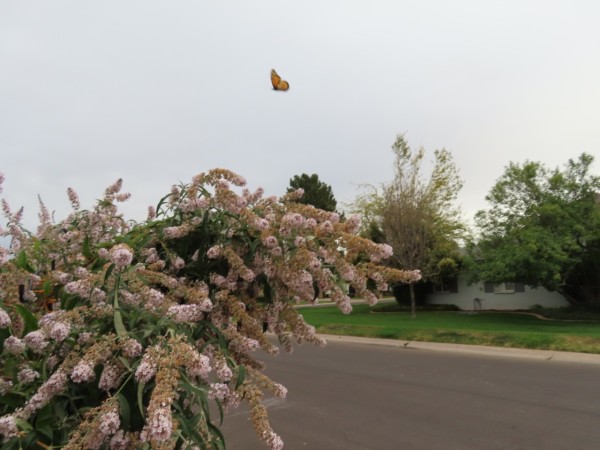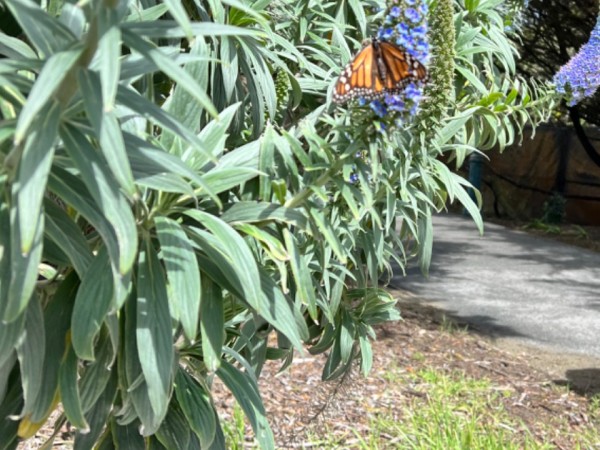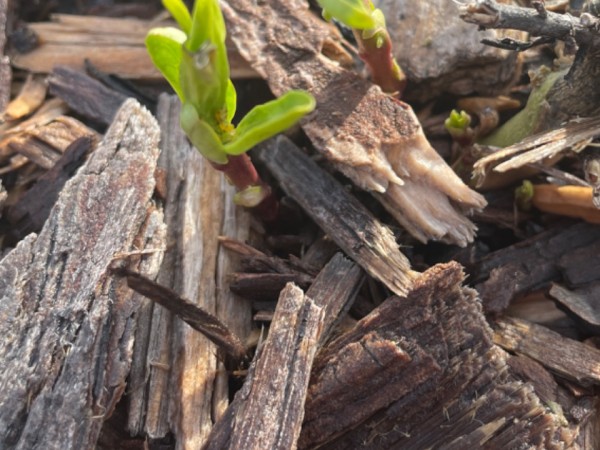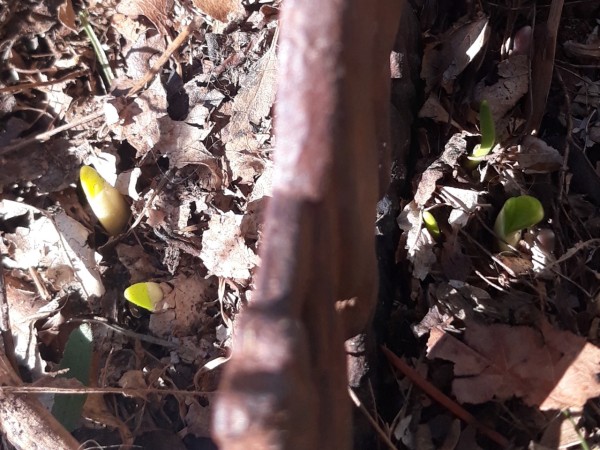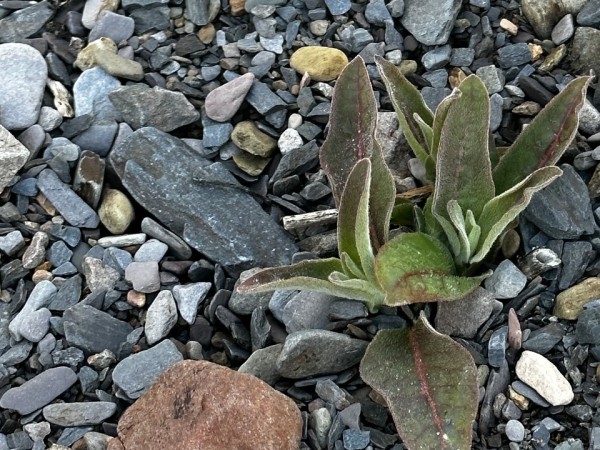Letter From Gail Morris: Western Monarch Spring 2023 Report #6
Western Monarchs Update
A record atmospheric river battered the California coast again last week but finally, five days of dry and sunny weather slowly warmed the land. Nights were still chilly and the forecast for most of the West for the next ten days is for below-normal temperatures and above-normal chances of precipitation. How will the monarchs fare in these unusually challenging conditions?
Monarch & Milkweed Sightings
There were several adult monarch sightings in the Los Angeles and Southern California regions without photos this month. But others sent monarch and milkweed photos to document their sightings.
Della found her first monarch of the season on March 14 in Phoenix, Arizona. “Came home from work to find the first Monarch of the season flying around the Buddleia. A Painted Lady chased it away before I could see if it’s gender. It was very large and in good shape. 5pm, cloudy, no wind, 70F.”
Devon spotted a monarch on March 21 in San Francisco, California
Milkweed is also emerging. Peggy found Asclepias fascicularis emerging earlier in the month on March 5 in Arroyo Grande, California.
Marlene found milkweed in Denver, Colorado, just appearing on March 11. “This small patch doesn't get snow piled on it when shoveling sidewalk and gets a lot of sun. Other areas have not yet come up.”
Susan in Scottsdale, Arizona, found milkweed on March 17: “Asclepius nyctaginifolia (Mojave milkweed)...one of three naturally-occurring clumps located within 1/2 mile section along a desert wash at 3,320ft. Clumps had two to four stems, each with 6-9 small, developing leaves.”
You can see more monarch activity and emerging milkweed reports on our Journey North maps:
News from the California Overwintering Sites
Lighthouse Fields
Diana Magor shares her observations from Lighthouse Fields in Santa Cruz. A week ago, Diana reflected on the current conditions and activity in the area.
“We’re slugging along here with our milkweed projects, which are going really well. Lots of new stuff beginning to happen, and FINALLY, the sun has come out after another downpour! It was 64 here today, and I did have a monarch touring the garden (think it was a male, but that’s pretty much all that’s left. Have seen far fewer monarchs this year than the last several years, and virtually no females have visited to lay eggs on any of my emerging milkweeds. Very different from last year! I suspect we no longer have a resident population here! We’re expecting 5 rain-free days, then another atmospheric River! I’m planting wildflower seeds like mad in between storms!”
On Friday, Diana shared this update:
“I didn’t go to LF [Lighthouse Fields] this week, but I did see 3 monarchs yesterday vying for a place at the Echiums that are blooming in my garden. 1 male was nectaring, then another flew in and was “shown the door” by the first one, and a few minutes later 3 were chasing each other around in a typical spiral. All males from what I could see. No females at my milkweeds this Spring! But we FINALLY have 5 whole days of sunshine b4 the next storm on Tues & Weds, then more sun. But the nights are still cold!”
Thank You!
A special Thank You to Diana Magor for her report.
Call for sightings!
Now that monarchs are on their way en route to the breeding grounds, your reports are critical to our understanding of their migration. Report your sightings of emerging milkweeds and monarchs in any life stage! Provide as much information as you can such as weather conditions (it’s okay to estimate). Your detailed description of what you see can include, but is not limited to, the monarch’s gender and activity and, if known, the type of milkweed, and flowers if they are nectaring. Let us know how monarchs are faring under stressors from winter storms still sweeping through! Be sure to check milkweeds for eggs, larvae or pupae if you are lucky to find them.
Gail Morris is the Coordinator of the Southwest Monarch Study (www.swmonarchs.org), a Monarch Watch Conservation Specialist, and the Vice President of the Monarch Butterfly Fund, the Central Arizona Butterfly Association, and the Western Monarch Advocates. The Western Monarch Population News is based on comments provided to Gail Morris. We hope to increase the number of sightings and therefore photos and comments entered into the Journey North. We rely on the volunteers who communicate regularly with Gail and who agree to participate in our effort to increase awareness of the population of western Monarchs. You can reach her at gail@swmonarchs.org

